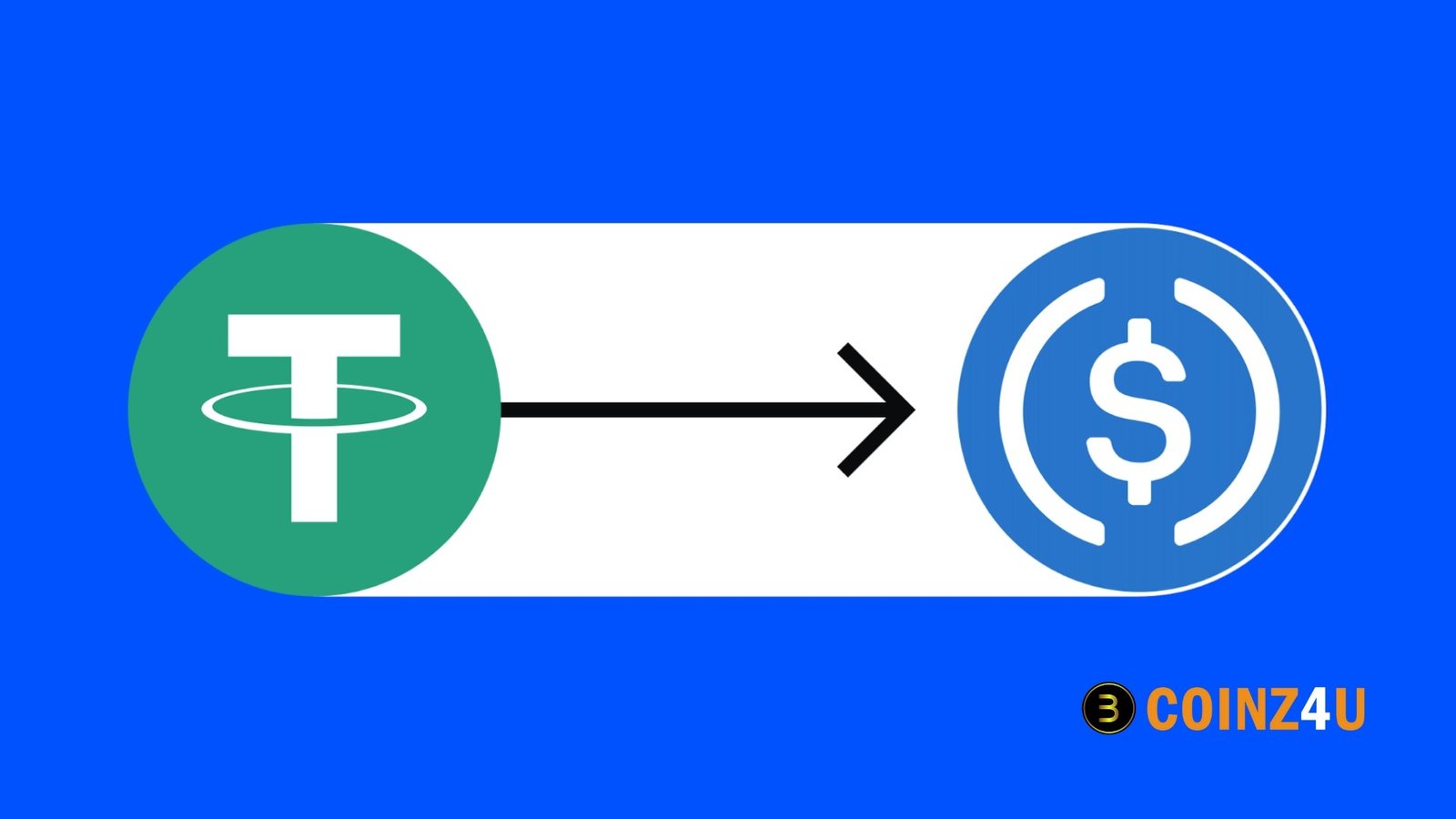Usdc to Usdt: Stablecoins such as USDC (USD Coin) and USDT (Tether) are crucial for hedging, trading, and investment strategies in the ever-changing cryptocurrency market. Trading and investing in these two popular stablecoins is commonplace. This article will delve into the USDC to USDT conversion process, including the rationale, possible methods, and user consequences of this type of conversion.
What Are USDC and USDT?
Before diving into the conversion process, it’s crucial to understand what USDC and USDT are.
USDC (USD Coin) is issued by the financial technology company Circle and is a stablecoin that is tethered to the US dollar. It provides customers with a high degree of transparency and liquidity by operating on various blockchains, including Ethereum, Algorand, and Solana. The value of one USDC token is directly proportional to the value of one US dollar or any reserve asset.
USDT (Tether) Tether Limited also issues another popular stablecoin. The value of USDT is directly proportional to that of the US dollar, just like it is for USDC. In addition to Bitcoin (via the Omni Layer), Ethereum (as ERC-20), and Tron (as TRC-20), Tether is compatible with several additional blockchains. Given its popularity and ease of trading, USDT has risen to the ranks of the market’s most actively traded cryptocurrencies.
Why Convert USDC to USDT?

There are several reasons why traders and investors might want to convert USDC to USDT:
-
Liquidity and Trading Pairs: USDT is often preferred on many exchanges due to its high liquidity and the availability of numerous trading pairs. If a trader needs to access markets or assets that primarily use USDT, converting from USDC may be necessary.
- Market Conditions: Some traders might find USDT to be more stable in certain market conditions, especially during times of high volatility. USDT’s widespread use can sometimes provide more stability and ease of trading.
- Arbitrage Opportunities: Traders who engage in arbitrage may need to switch between USDC and USDT to exploit price differences across exchanges. This conversion helps in capitalizing on market inefficiencies.
-
Exchange Requirements: Different exchanges have different stablecoin preferences. If a user wants to trade on an exchange that predominantly uses USDT, converting USDC to USDT is often required.
How to Convert USDC to USDT
There are several methods to convert USDC to USDT, each with its advantages and considerations:
Cryptocurrency Exchanges:
- Centralized Exchanges: Most centralized exchanges like Binance, Coinbase, and Kraken support direct conversions between USDC and USDT. Users can execute a trade or transfer directly within the platform. This method is typically straightforward but may involve fees, especially for larger transactions.
- Decentralized Exchanges (DEXs): Some decentralized exchanges offer swaps between USDC and USDT. Users can trade directly from their wallets using platforms like Uniswap or Sushiswap. However, the availability of these pairs on DEXs can vary, and fees might differ from those on centralized exchanges.
Over-the-Counter (OTC) Services
Large transactions that may not be suitable for conventional exchanges are catered to by over-the-counter providers. With the use of over-the-counter desks, you can convert huge quantities of USDC to USDT at agreed rates and with less slippage. Institutional investors or very wealthy people often choose this option.
Peer-to-Peer (P2P) Platforms
Users are allowed to transact directly with one another on P2P systems. Users can post USDC for sale and discover buyers interested in buying USDT. More competitive rates may be available using this approach, but counterparty risk and platform reputation must be carefully considered.
Automated Market Makers (AMMs)
You can trade stablecoins with the help of liquidity pools that some AMMs offer. Using these pools, users can convert USDC to USDT, and they usually get higher rates and reduced costs. The conversion rate, however, is susceptible to the liquidity of these pools.
Considerations When Converting USDC to USDT
-
Fees and Spreads: Conversion between stablecoins might involve fees and spreads, which can vary depending on the method and platform used. It’s essential to compare these costs to ensure that the conversion is cost-effective.
- Exchange Rates: While USDC and USDT are both pegged to the US dollar, slight deviations can occur due to market conditions or liquidity issues. Monitoring exchange rates and opting for a platform with favorable rates can optimize the conversion process.
- Security and Reputation: When choosing a platform or service for conversion, consider its security features and reputation. Reliable platforms with robust security measures reduce the risk of potential issues during the transaction.
-
Regulatory Considerations: Ensure that the chosen method and platform comply with relevant regulations. Different regions may have varying regulations regarding stablecoin transactions, which can impact the process.
Final Thoughts
Whether for trading, managing liquidity, or arbitrage, many cryptocurrency users find it necessary to convert USDC to USDT. To optimize their conversion plans, consumers should be aware of the available options, the fees associated with them, and any hazards that may be involved. Improving trading efficiency and financial management requires keeping up with stablecoin dynamics and market conditions as the cryptocurrency ecosystem keeps expanding.
Also Read: How to Get Started with Cryptocurrency: A Beginner’s Guide By Coinz4u


